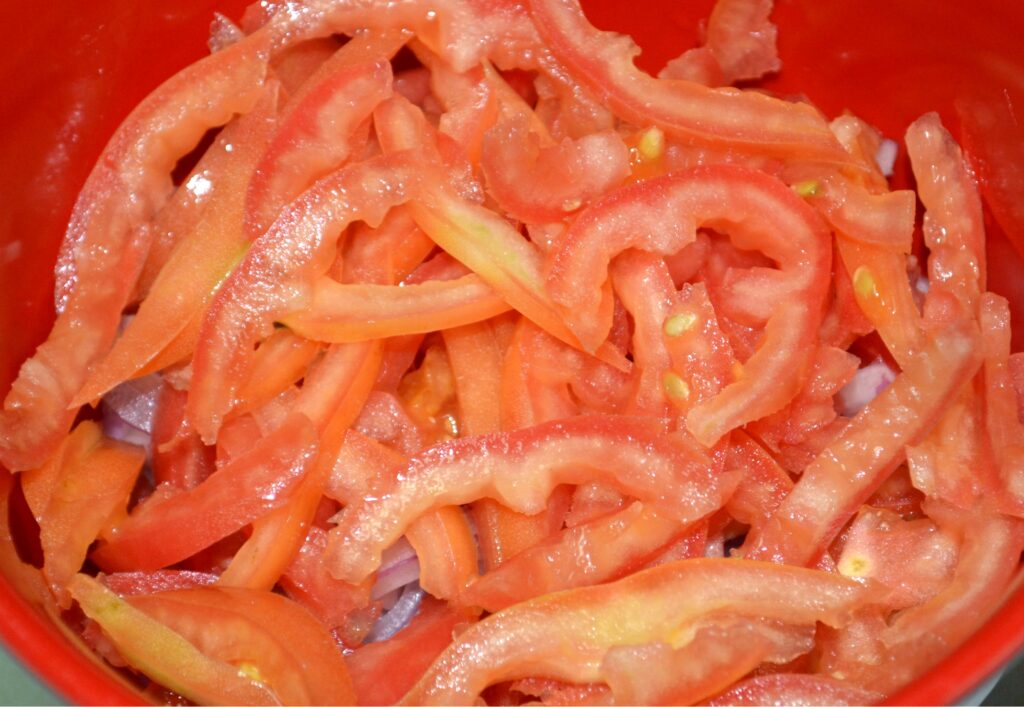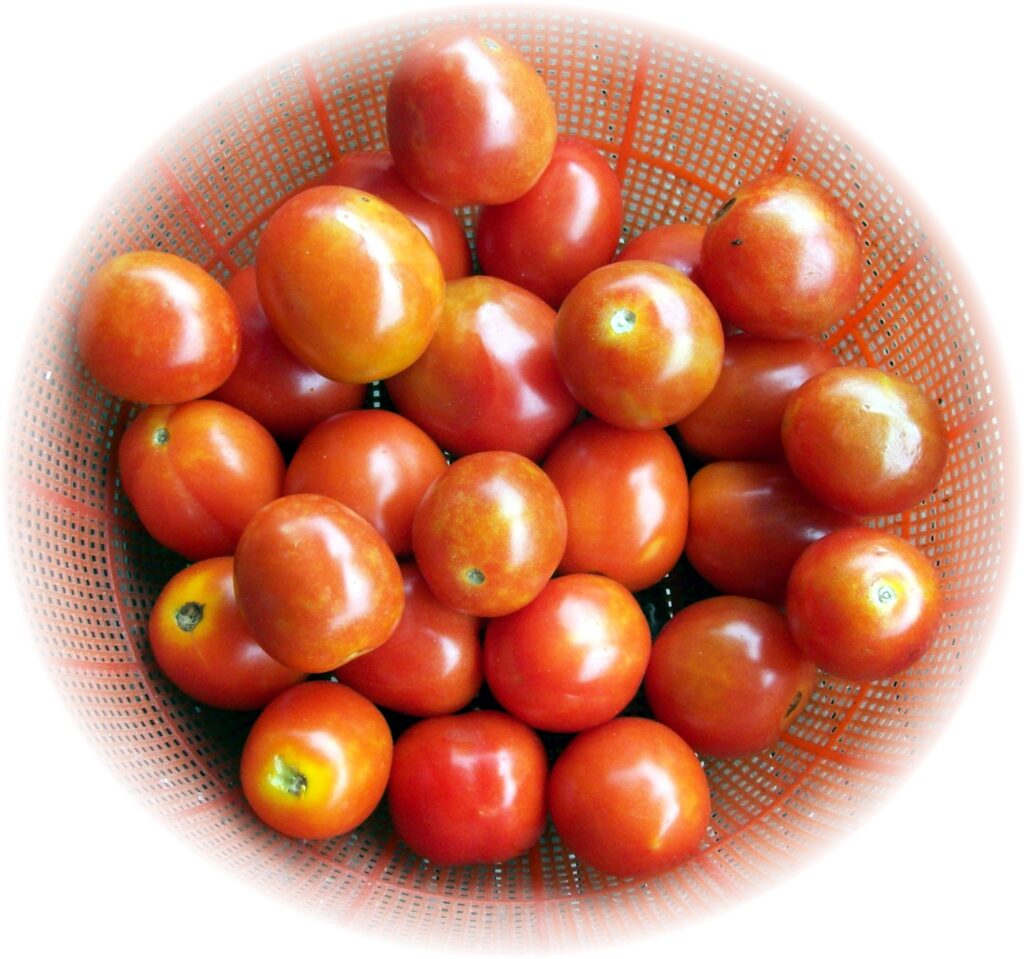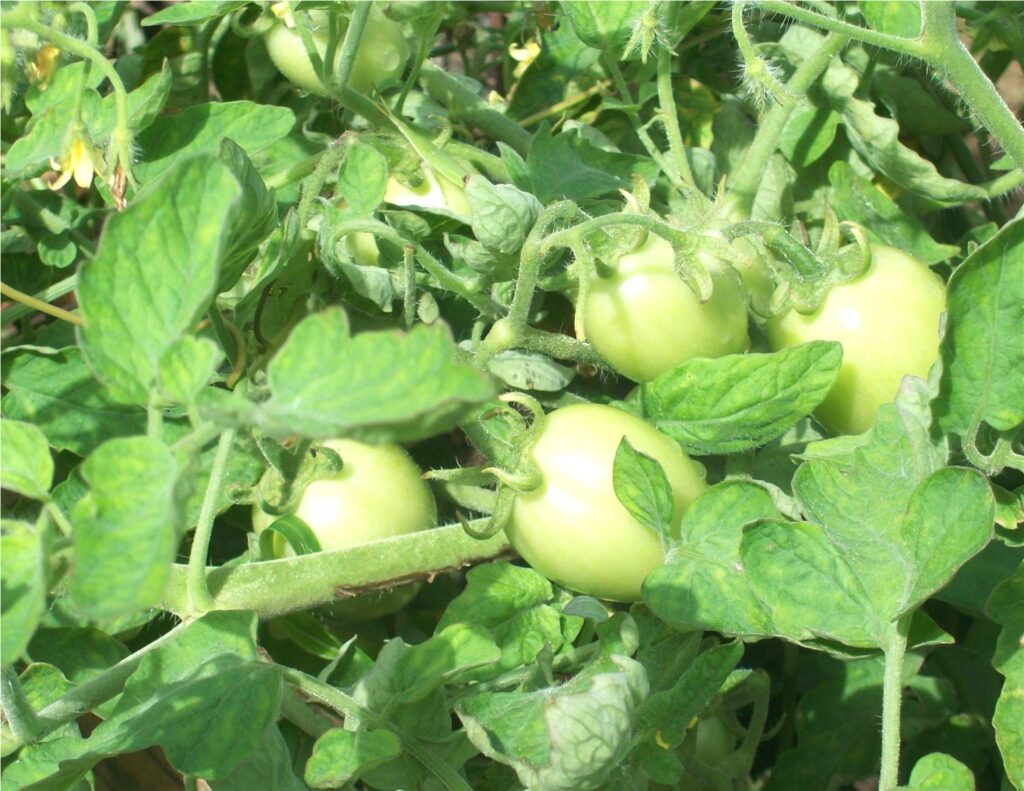Text and Photos by Henrylito D. Tacio
Is it “tuh-MAY-toh” or “tuh-MAH-to”?
However you pronounce it, tomatoes were once considered poisonous. A botanist mistakenly took the tomato for the “wolf peach” referred to by Galen in his third-century writings, that is, “poison in a palatable package which was used to destroy wolves.”
But the question that is still debatable: Is tomato really a vegetable or is it a fruit? In the 1840s, botanist Montague Alwood astonished his daughter by the “introduction of this wonderful fruit – or is it vegetable?”
Tomato is both, according to the U.S. Department of Agriculture’s Economic Research Service. Yes, botanically speaking, the tomato is a fruit, but horticulturally and legally, it is considered a vegetable.
This debate has been adjudicated by none other than the U.S. Supreme Court. It happened in the late 19th century in connection with a challenge to tariffs on imported produce. The high court ruled in Nix vs. Hedden that despite the botanical definition, tomatoes are a vegetable, in part because, at the tables of the time, they were served as “the principal part of the repast” and not as a dessert.
According to Andrew F. Smith’s “The Tomato in America,” the tomato probably originated in the highlands of the west coast of South America, where they grow wild in what is now Peru, Bolivia, Chile, and Ecuador. They were first cultivated by the Aztecs and Incas as early as 700 AD.

Sliced tomato 
Tomato
“The first mention of a tomato in a cookbook does not come until 1692 in a book published in Naples, and the first mention of a pasta recipe with tomato did not happen until Ippolito Cavalcanti, Duke of Buonvicino, wrote about vermicelli co le pommodoro. So actually, although pasta and tomatoes seem natural partners today, they were not always so,” wrote Belton in his column.
Also, thanks to tomatoes, pizza came into existence. Pizza was invented around Naples in the late 1880s. The story goes that it was created by one restaurateur in Naples to celebrate the visit of Queen Margarite, the first Italian monarch since Napoleon conquered Italy. The restaurateur made the pizza from three ingredients that represented the colors of the new Italian flag: red, white, and green. The red is the tomato sauce, the white was the mozzarella cheese, and the green was the basil topping. Hence, Pizza Margarite was born and is still the standard for pizza.
In the United States, soup mogul Joseph Campbell came out in 1897 with condensed tomato soup, a move that set the company on the road to wealth as well as further endearing the tomato to the general public. He may have made tomato soup popular, but the first recipe was credited to Maria Parloa, whose 1872 book “The Appledore Cook Book” described her tomato chowder.
In the Philippines, the great variety of its uses leads to the popularity of tomatoes. They are common ingredients in salads. Tomatoes are also made into soup, pickle, catsup, sauce, and juice. They are served raw, baked, stewed, and as a sauce with various other foods.
The English word “tomato” comes from the Aztec word, “tomatl.” Botanist Tournefort provided the Latin botanical name, “Lycopersicon esculentum.” The French referred to the tomato as pommes d’amour, or love apples, as they thought them to have stimulating aphrodisiacal properties. Among Filipinos, tomatoes are called “kamatis.”
One good reason why you should eat tomatoes: It can dramatically reduce the risk of having a stroke. That’s according to the Finnish study published in the “Neurology” journal.
The recent study – based on data from more than 1,000 middle-aged men, followed for an average of 12 years – has provided more support for diets rich in fruits and vegetables. In tomatoes, the key factor appears to be the powerful antioxidant lycopene.
“This study adds to the evidence that a diet high in fruits and vegetables is associated with a lower risk of stroke,” pointed out study author Jouni Karppi of the University of Eastern Finland in Kuopio.
The participants with the highest levels of lycopene had a 59 percent lower risk of stroke from a blood clot than the men with the lowest levels of the antioxidant, the report added. In total, 67 of the men suffered strokes during the course of the study.
Most strokes happen when a blood clot blocks the flow of blood, and therefore oxygen, to the brain. If people get to the hospital quickly, doctors can treat them with clot-dissolving drugs that may be able to stop the stroke in progress.
Or, to avoid having a stroke, people should keep on eating tomatoes. Remember what Hippocrates, the father of medicine, once said: “Let thy medicine be thy food.” He made this statement thousands of years ago, and he must have had a tomato in his mind when he said it.
Tomato is considered one of the richest of all foods in vitamins. It is very rich in all three important vitamins like A, B, and C, while most vegetables are deficient in one or more. Vitamin A plays an important role in vision, fighting infection and bacteria, maintaining skin and body linings, bone and body growth, reproduction, and normal cell development.

Green tomato 
Grilled bangus with tomato
The B vitamins are very important to maintain good health. A deficiency of Vitamin B6 can raise a person’s risk of heart disease. Evidence also indicates that about 40 percent of heart attacks and strokes may be caused by a deficiency of folic acid, another important B vitamin.
Vitamin C is needed by the body to form collagen and fiber for teeth, bone, cartilage, connective tissue, skin, and capillary walls. It helps in fighting bacterial infections. It may also protect against declining mental ability and stroke. Vitamin C of tomatoes is not destroyed by heat, and therefore, they are practically valuable for all sorts of stomach and liver troubles.
Tomato is a major crop in India, where several authors have written about its medicinal properties. Dr. S. J. Singh, author of “Practical Naturopathy,” has described the tomato as very rich in food minerals which help to keep the blood alkaline and thus maintain a high resistance to disease. It is very rich in iron and potash salts. Tomato stimulates the torpid liver and is good in dyspepsia, diarrhea, and dysentery. As a source of fiber, one medium tomato will equal one slice of whole wheat bread with a penalty of only 35 calories.
In his book, “Introduction to Ayurveda,” Dr. C. C. Thakur claimed that tomato improves the digestive system and cures chronic diseases of the stomach. It is a blood purifier, cures anemia, piles, liver troubles, and chronic fever.
On the other hand, Dr. G. S. Verma – the man behind “Miracles of Fruits” – has written that tomato is a sort of fruit and should better be eaten uncooked. Tomatoes remove constipation and strengthen teeth. It is easily digestible, and as such, it is recommended as a good diet for invalids and especially in fevers, diabetes, and after long fasts.
Although green tomatoes are wonderful when cooked or pickled, they should be avoided in large amounts when raw, nutritionists warn. Green tomatoes contain large amounts of tomatin, a toxin that is often extracted from seeds for its antibiotic prowess.
However, it was not until the discovery of the carotenoid lycopene that modern science began to truly recognize the healing power of the tomato. In 1998, a press release from the Heinz Institute of Nutritional Sciences touted the benefits of lycopene, an antioxidant that purportedly fights the free radicals that can interfere with normal cell growth and activity. Lycopene is present in tomatoes and, especially when tomatoes are cooked, has been found beneficial in preventing prostate cancer.
Lycopene is now recognized as a powerful substance in the fight against cardiovascular disease. A health expert wrote: “The lycopene-rich tomato, with its synergistic nutrients, is a powerful protector of heart disease. When the sauce is made in the traditional Italian fashion, with garlic, oregano, parsley and all the other spices, a tremendous amount of antioxidant, antithrombotic, and anti-inflammatory action is added.”
There is even some mounting evidence that lycopene in tomatoes may help to prevent cataracts, age-related macular degeneration, and sunburns. More and more research appears to show that lycopene assists the immune system in protecting the body from illness.

